How to Get a Head in Baking
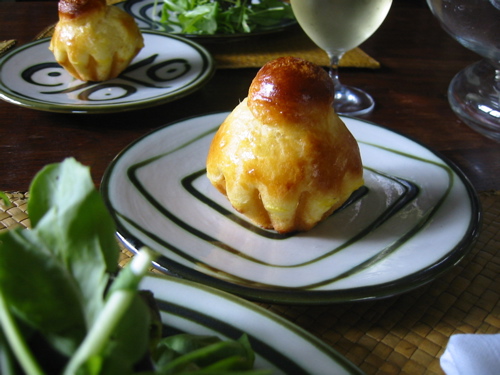
Well the brioche turned out pretty darn OK yesterday. The crumb was tender, yellow and buttery and the shapes were good. Fewer of the little têtes flopped over than usual, and that was nice, but really beside the point. Personally, I get very irritated by bakers and baking instructors who call any brioche à tête whose head isn’t perfect a failure. Some of the stuffier baking books I’ve seen actually discourage people from attempting them, since perfectly centered tops are so hard to achieve. I don’t know which Parisian pâtisseries these people have been shopping at, but if there’s one where every last little topknot is pointing true North, I’ve never seen it. What a buncha killjoys.
Sure, you’ll get some drunken, nodding heads the first few times you make brioche à tête. Some may even fall clean off. Heck that still happens to me. But darn it, that’s no reason not to keep trying. And in fact there are some time-tested tricks that will significantly improve your odds of creating a perfect tête.
First, don’t overload your molds. Use 1 1/2 to 2-ounce portions of brioche dough in each little brioche mold and no more. Next, coat the brioche as evenly as possible with egg wash before putting them in the oven, being careful to avoid getting big dollops of yolk into the crevice where the dough meets the mold (the egg will turn to glue in the oven, constraining the rise and pulling the tête to one side).
When it comes to shaping the têtes there are several different methods. One simply calls for pulling a small amount of dough off the main portion, rolling it into a little ball, and sticking it to the top with egg. Another similar one calls for rolling the small piece into a teardrop shape, making a hole in the middle of the larger ball, and stuffing the small piece in. In my experience, the first of these two methods results in over half the têtes falling off in the oven. The second, not quite half.
The most reliable method I know is the one I will now try to explain. First, roll your 1.6 ounce (that’s my perfect number) dough piece into a ball. If the dough starts sticking and smearing, or just getting too soft generally, apply some more flour. If that doesn’t work just collect it back into a ball and put it back into the fridge to chill for 10 minutes or so and try again.
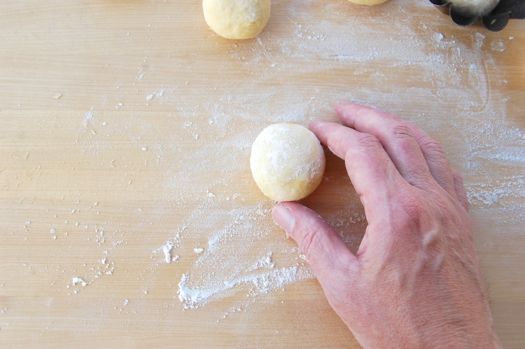
Next comes the tête. Put one of your dough balls in front of you and form your hand as though you were about to administer a karate chop. Bring the edge of your hand down to the ball, just off the center, touching it only with your pinky.
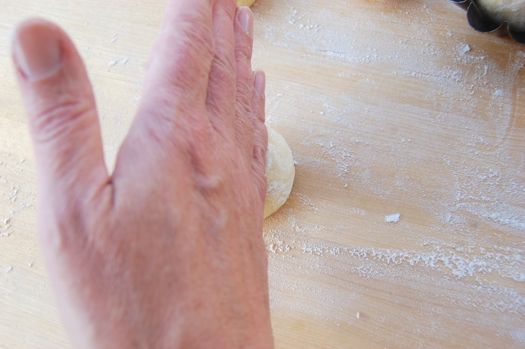
Now, begin a slow sawing motion, rolling the ball back and forth, trying to pull about 20% of the dough away from the main mass while not entirely separating it. The ball will first become oblong, then teardrop-shaped, and will ultimately resemble a bowling pin. When you’re at the point where any more sawing will sever the tête, stop.
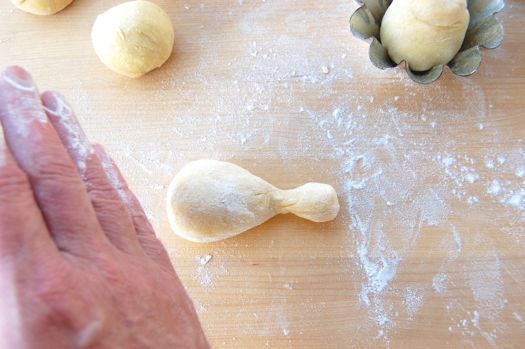
Now just pick up the dough and pat the skinny end back down onto the fat end. You should have something that resembles Dom Deloise, or maybe Chef Paul Prudhomme.
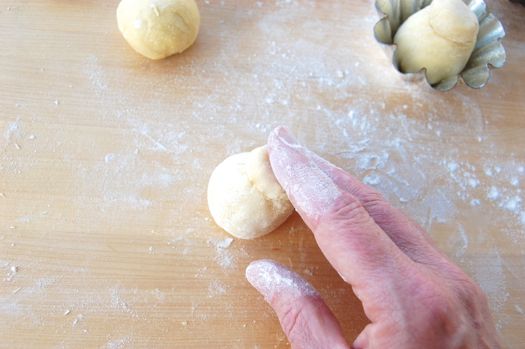
(Tell me, why is it that the really big guys always seem to go for the superfly hat fashion statement? And then always in white? It’s a mystery).
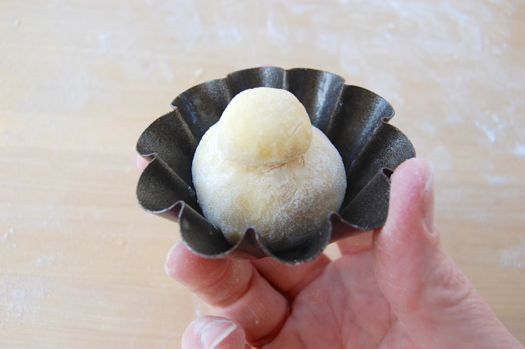
Anyway, don’t worry about any wrinkles or creases, since they’ll pull out during proofing and baking. One interesting tip I’ve received, and that does seem to work, is to snip around the base of the topknot with oiled kitchen shears before putting the brioche in the oven. This does seem to free the tops, which tend to fuse to the bodies as they proof. The extra freedom does tend to give me more centered heads. Paint them with egg wash and proof until they’re very soft and poofy to the touch, roughly twice their original size. Remember to keep them moist as they rise or a tough skin will form on the exterior, marring the crust and constraining the rise. Paint once more with egg wash just before baking, and bake at 425 for 8-12 minutes.
So there you go! Start practicing! Brioche à tête is one hell of a way to impress your friends and neighbors. Though if you’d just as soon keep them all to yourself I can certainly relate. I have a jar of raspberry jam I set aside just for that purpose.
Hi Joe, when making a loaf, for how long it’s baked?
Hey Paola!
You’ll want a 350 degree oven in that case, and about 20-25 minutes should do the trick!
Cheers,
– Joe
I really enjoyed reading your article on this, because your views on the brioche `a tete are completely different then then way I was taught in culinary school. In class the instructor made sure that the heads were perfectly centered and the final product was as perfect as it could get. I do agree with you in the aspect that they do taste exactly the same no matter the appearance. However, if you had a bakery you could only sell the “perfect” ones based on customer demand and just the standard of the bakery. The ones that don’t look so pretty don’t have to be thrown away, but used the next day in a bread pudding or French toast application.
Hey Courtney!
Thanks for your very nice comment! Of course I’m in a very different position than your instructor, I see my job as encouraging home bakers to try some of these more exotic presentations. Perfectionism — much as I admire it — only gets in the way in that case. I’d much rather a home baker laugh at a tipsy head than feel discouraged by it. In our increasingly order-out culture we need every baker we can get! 😉
Cheers,
– Joe